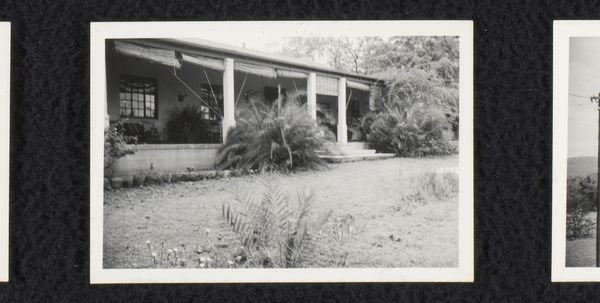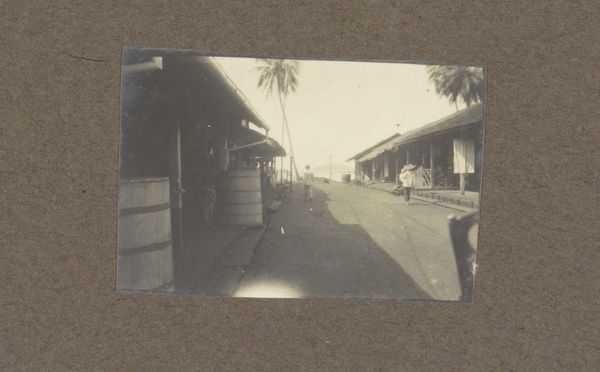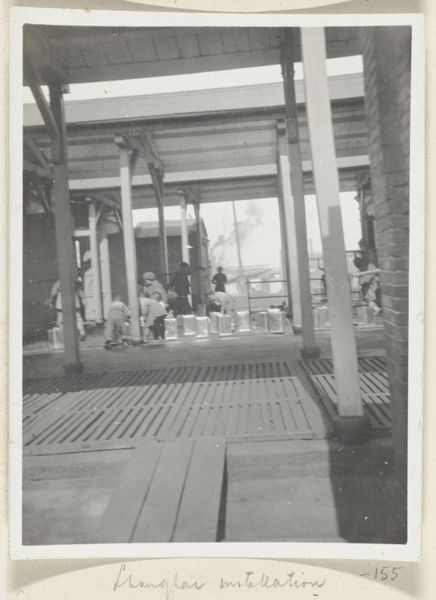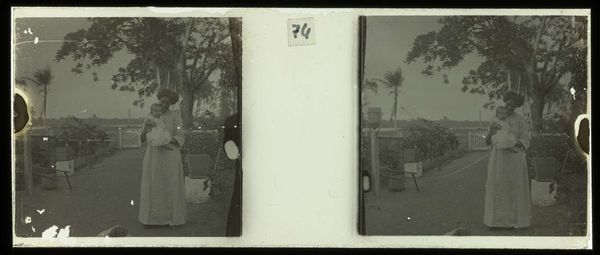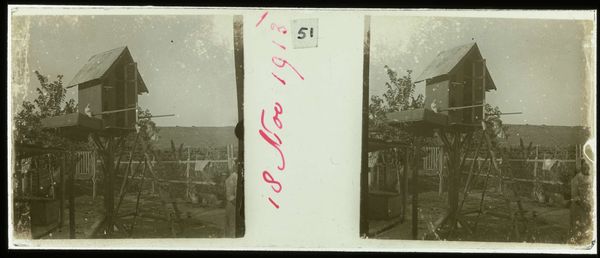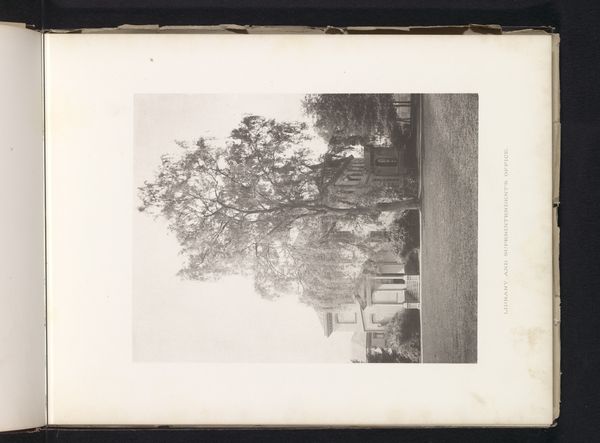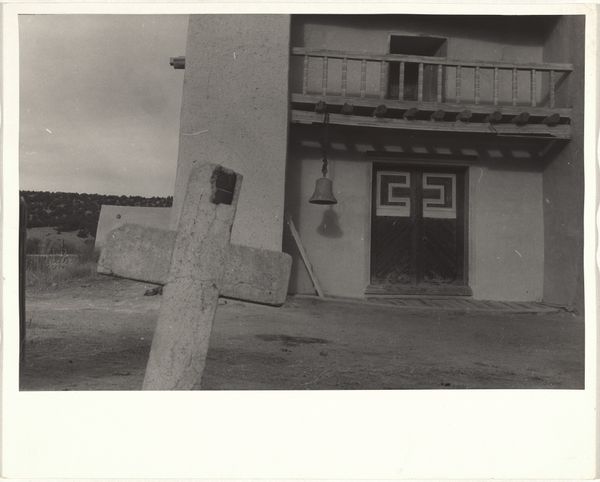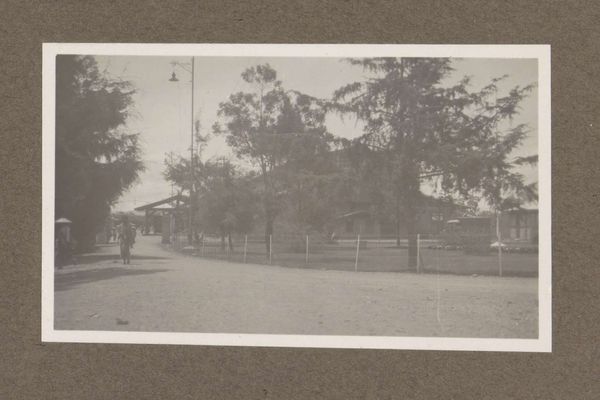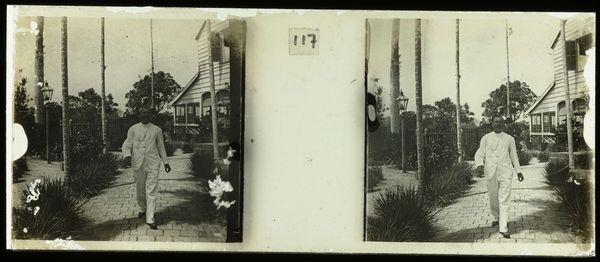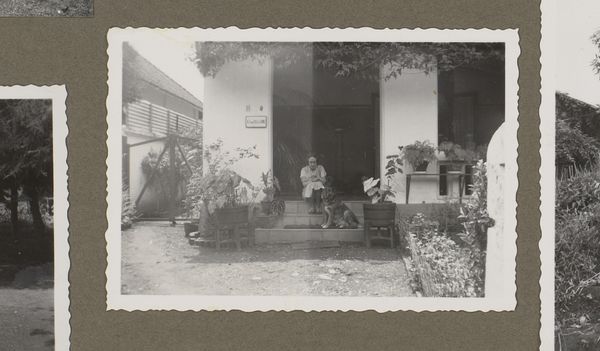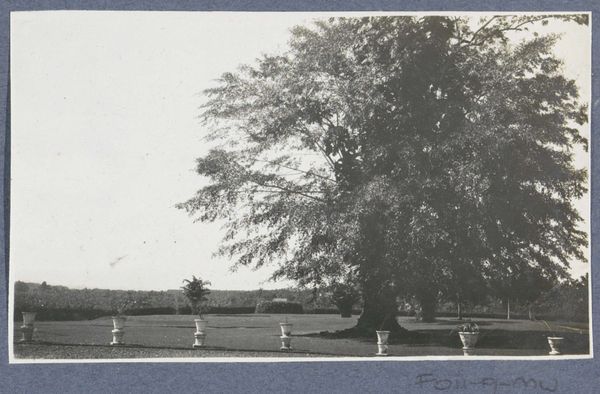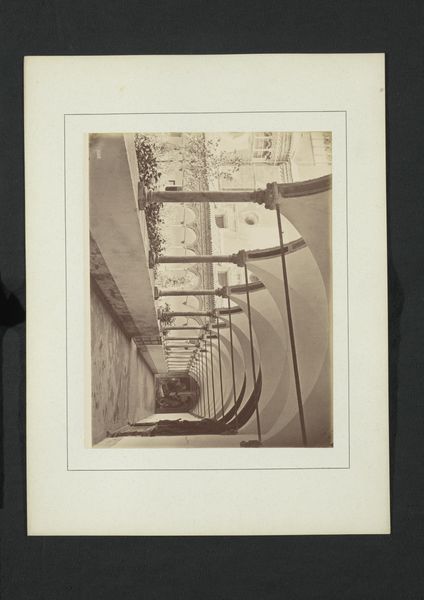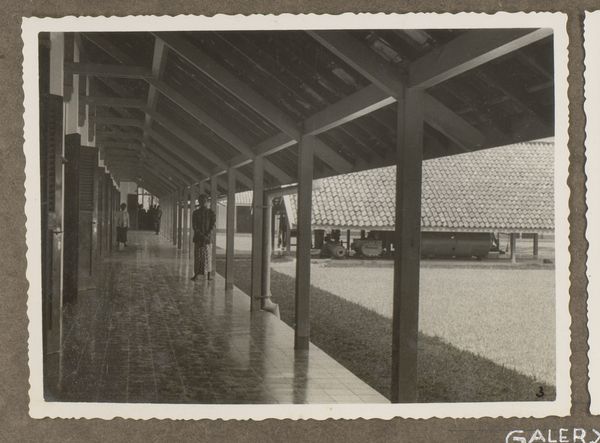
Gezicht in een dorp, vermoedelijk in Transvaal, Zuid-Afrika 1967 - 1971
0:00
0:00
photography
#
african-art
#
landscape
#
street-photography
#
photography
#
black-arts-movement
#
realism
Dimensions: height 85 mm, width 60 mm
Copyright: Rijks Museum: Open Domain
Curator: What a poignant photograph! Willem Jacob van den Berg captured this "Gezicht in een dorp, vermoedelijk in Transvaal, Zuid-Afrika" sometime between 1967 and 1971. The gelatin silver print invites quiet contemplation. Editor: It feels… vulnerable. That lone figure in the village center, surrounded by the stark geometry of the structures. Black and white always lends a kind of historical gravity, but here it’s almost unsettling. Curator: Unsettling is apt, given the historical context of South Africa during that period. Consider how the framing – the strong foreground presence of the thatched roof structure on the left – pulls us into the scene, almost as voyeurs. Is it really in South Africa? There's a stark beauty in the composition itself, adhering loosely to realist ideals of documentation, while the mood certainly aligns with some themes found in the Black Arts Movement. Editor: Right, that movement sought to portray the unfiltered experience. What I find striking are these recurring fences or barricades – literally just sticks hammered into the ground. Visually, it confines the space, creating distinct zones. Do you think that those visual barriers point toward something political or perhaps speak to community structure? Curator: Potentially. These types of fences may represent traditional boundaries and social codes of a rural community in the Transvaal, though the black and white media may invite comparison to more aggressive socio-political structures given the era in which it was shot. It's equally plausible they denote divisions in the land ownership, resources, even families within a village. Consider, too, the figures partially obscured, under the shadowed structure at the left; that partial concealing also weighs on my reading of the whole. It makes me feel almost intrusive looking at this private domestic scene. Editor: Absolutely, the ambiguity of those obscured figures really heightens that sense of intrusion and, strangely, almost melancholy. Knowing it falls into a movement about unfiltered views complicates it further, right? Whose experience, or whose view, is being prioritized here? Curator: Precisely, this photo is complex. We're left questioning who's telling the story, what they want us to see, and maybe more importantly, what they’re choosing to hide. Editor: I think the enduring power of photographs like this comes down to their layered perspectives, and in turn, the new dialogues that their stories inspire.
Comments
No comments
Be the first to comment and join the conversation on the ultimate creative platform.
